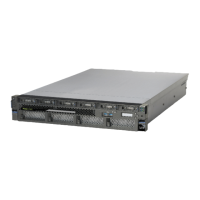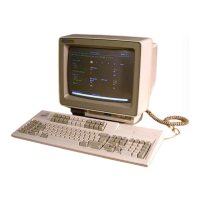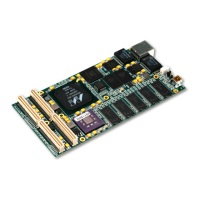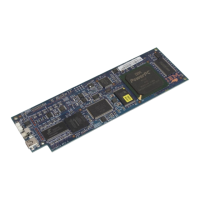Transfer information from registers
BA,
7 A, 6A,
and
SA
to
BB,
7B, 6B,
and
SB.
Retain information
in
registers
BB,
7B, 6B,
and
SB.
S.
Cycle 5 ( store
an
B)
:
Close numeric-B
latch
contact.
Enter
numeric
information into register
BA
and
energize
the
punch
clutch.
Read-out, Punch-out
•
Read
out
the
stored
information.
•
Set
up
the
interposer
magnets.
•
Energize
the
escape
and
punch
clutch
magnets.
•
Punch
the
information
into
the
card.
Description
The
punch-out
of a left-zero field is like
an
auto-dupli-
cation operation.
It
is necessary to take a
punch
cycle
without
an
escapement
to
start
the
punch-out.
During
the
time
that
P5 is made,
the
information
in
the
first
register is
read
into
the
interposers. Information
in
the
interposers causes
the
first
escapement
and
the
next
punch
cycle.
It
is necessary to
prevent
the
transfer
of information
stored in
the
register for
the
first cycle
(dummy
cycle)
to allow
the
first register
to
be
read
and
cleared. As
each
column is
punched,
the
information is
transferred
from register to register. This is
done
so
the
informa-
tion to
be
punched
is in register
IA
at
P5
time
of
each
punch
cycle.
The
information is
stored
in
BCD
and
must
be
converted to decimal form before reaching
the
interposer magnets. This is accomplished
by
using
register
IA
relays to form a
decode
tree.
Read-out, Punch-out
Cycle
1:
Refer to
Figure
I-B
for timing within cycles.
The
operator
presses
the
left-
zero key, closing
the
left-zero
latch
contact. This ener-
gizes
the
read-out relay ( 326)
and
the
punch
clutch.
The
left-zero field
I,
2,
and
3 relays ( 3I5, 324, 305)
and
key-entry relay ( 304)
are
being
held
by
starwheel
2.
The
P-cam-gate relay ( 309) is up,
being
picked
at
I75° of
the
last cycle
by
P4.
We
would
normally trans-
1-8
Transfer
registers
BB,
7B, 6B,
and
5B to 7
A,
6A,
SA,
and
4A.
Restore
the
keyboard.
Transfer
information from registers
BA,
7
A,
6B,
SB,
and4B.
Retain
information
in
registers
BB,
7B, 6B, SB,
and
4B.
fer information from
the
B registers
to
the
A registers
at
10°
when
P3
makes,
but
for this cycle
we
prevent
the
P3
pulse
from going
to
the
registers. This is
done
with
the
N/c
3-point of
the
read-out relay
(326).
Because
we
do
not
transfer
the
information,
we
must
hold
the
information
in
the
register for this first cycle.
This is accomplished
by
using
the
N / o 5-point of
the
read-out
relay ( 326)
and
starwheel
2.
By
the
time
that
an
escapement
has occurred
and
starwheel 2 opens, P2
is made, providing a
hold
to
the
B registers.
·when
the
2-starwheel opens,
the
key-entry relay ( 304)
and
the
field
I,
2,
3 relays ( 3I5, 324, 325)
are
de-energized.
The
IA
register is
held
during
the
first cycle
by
the
N/c
4-point of
the
punch-out
relay (
3I7)
until
B6°
when
relay
3I
7 is picked. Relay
3I
7 is
picked
by
P5
through
the
N/o
2-point of
the
read-out relay ( 326).
Before relay
3I
7 is picked, P6 makes, providing a
hold
until
I50°
for register IA.
If
the
relays of register
IA
were
dropped
at
I50°,
the
interposer magnets circuit
would
be
opened
by
relay points.
P7 provides a continuing
hold
to register
IA
relays
until 10° of
the
next cycle.
At
PS time ( 86° to 166° )
the
interposer magnets
are
energized
through
the
N/o
6-point of
the
read-out
relay ( 326)
and
the
decode
tree
of register
IA
relay points.
It
is this circuit
that
